

SEOUL, Aug. 25 -- Rallies against the deployment of a U.S. missile shield in South Korea spread as people living in the originally designated site officially called for deliberation on another place to install the shield.
Thousands of residents in the southeastern city of Gimcheon gathered on Wednesday evening to hold a rally against the unilateral deployment decision concerning the Terminal High Altitude Area Defense (THAAD) system, which was made in early July between Seoul and Washington.
The two allies initially agreed to deploy the U.S. missile defense battery at a missile emplacement in Seongju county in North Gyeongsang province by the end of next year.
Seongju residents aroused the bitterest opposition to the closed-door decision without any prior notice and explanation, demanding a re-examination of where the super microwave-emitting radar is sited.
One THAAD battery is composed of six mobile launchers, 48 interceptors, a fire control unit and an X-band radar, which is known to emit microwaves detrimental to human bodies and environment.
On Aug. 17, South Korean Defense Minister Han Min-koo visited the Seongju county, saying that if residents formally call for a re-designation within the county, the defense ministry will re-consider where the U.S. missile shield is sited.
Local media outlets began to report that a strong candidate site would be a golf course away from the originally designated site. The golf course is within the Seongju county, but it is closer to the Gimcheon city with a population of about 140,000.
On Monday, the Seongju county formally called for deliberation on another site for the THAAD deployment, and Gimcheon residents were enraged at media reports that defense ministry officials had already made visits to the golf course.
Kim Se-woon, co-chair of the Gimcheon committee for THAAD opposition, said Wednesday that unless the THAAD battery causes any damage to people and environment as the defense ministry insists, there would be no reason for change in the deployment site.
Kim said the site alteration came from strong oppositions by Seongju residents, adding that change in the site would represent the negligence of Gimcheon citizens, which will never be tolerated.
The THAAD deployment on South Korean soil will raise tensions on the Korean Peninsula and in Northeast Asia as it makes the Democratic People's Republic of Korea (DPRK) more aggressive and damages security interests of China and Russia.
The DPRK test-fired a ballistic missile from a submarine off its east coast early Wednesday in defiance of repeated warnings from the international community against any test of ballistic missile technology.
The submarine-launched ballistic missile (SLBM) can make the THAAD in South Korea worthless as the AN/TPY-2 radar is incapable of detecting and tracking missiles launched from a DPRK submarine that moves deep under the waters.
The THAAD deployment decision may have encouraged the DPRK to speed up efforts at the SLBM development, while leading South Korea to face diplomatic and economic troubles as China and Russia strongly oppose the U.S. missile shield.
THAAD's X-band radar can peer deeply into Chinese and Russian territories, breaking a strategic balance in the region and stoking arms race in the regional powder keg.
Even if Seoul changes the THAAD deployment site, controversies will be non-stop here as seen in the clear-cut split among South Korean people over the U.S. missile defense system.
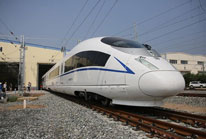 World's fastest bullet train to start operating next month
World's fastest bullet train to start operating next month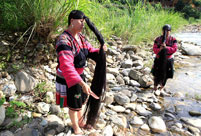 Huangluo: China's 'long hair village'
Huangluo: China's 'long hair village'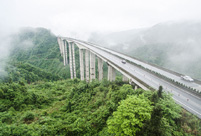 Spectacular bridge with one of the tallest piers in the world
Spectacular bridge with one of the tallest piers in the world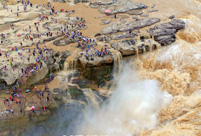 Magnificent view of Hukou Waterfall
Magnificent view of Hukou Waterfall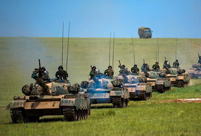 A glimpse of Stride 2016 Zhurihe B military drill
A glimpse of Stride 2016 Zhurihe B military drill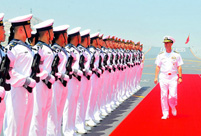 US Navy chief tours Liaoning aircraft carrier
US Navy chief tours Liaoning aircraft carrier Chinese American woman wins Miss Michigan
Chinese American woman wins Miss Michigan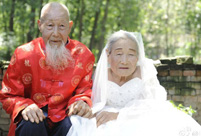 Centenarian couple takes first wedding photos
Centenarian couple takes first wedding photos Traditional Tibetan costumes presented during fashion show
Traditional Tibetan costumes presented during fashion show Top 10 livable Chinese cities
Top 10 livable Chinese cities Top 20 hottest women in the world in 2014
Top 20 hottest women in the world in 2014 Top 10 hardest languages to learn
Top 10 hardest languages to learn China’s Top 10 Unique Bridges, Highways and Roads
China’s Top 10 Unique Bridges, Highways and Roads Corrupt officials come up with creative ways to avoidpunishment
Corrupt officials come up with creative ways to avoidpunishment Death of sick teacher highlights medical rights
Death of sick teacher highlights medical rights An increasingly active Panchen Lama is expected to mitigateDalai's influence
An increasingly active Panchen Lama is expected to mitigateDalai's influence Hugo Award-winning author Liu Cixin talks about the future ofChinese sci-fi
Hugo Award-winning author Liu Cixin talks about the future ofChinese sci-fiDay|Week